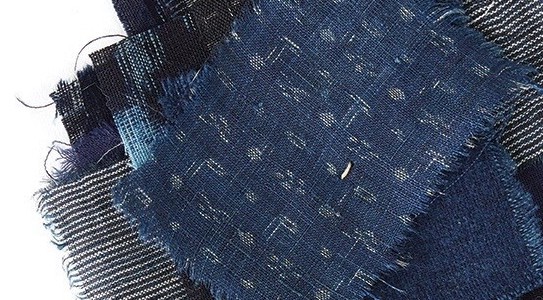Subscriber Exclusive
A History of Hungarian Csetnek Lace
Learn the story of this delicate crochet style.
Learn the story of this delicate crochet style. <a href="https://pieceworkmagazine.com/hungarian-csetnek-lace-history/">Continue reading.</a>
https://www.datocms-assets.com/75076/1741190138-hungarian-crochet-lace-header.jpg?auto=format&w=900
Try your hand at a delicate crochet technique. Current PieceWork magazine subscribers can log in and access the pattern for this subscriber-exclusive PDF below.
The story of Csetnek lace resembles the stories of many European laces in the nineteenth and twentieth centuries. In 1904, two philanthropic sisters, Erzsébet (1856–1917) and Aranka Szontagh (1858–1950), who lived in the countryside close to the small town of Csetnek (historically part of Northern Hungary, now part of Slovakia), wished to create employment opportunities for local women because the area’s tobacco-growing industry, their main source of income, had declined.
At about this time, the sisters’ cousin Kata (dates unknown), who lived in Paris, learned to make Irish crocheted lace, which was highly popular in the French capital. When she arrived in Csetnek with her new lacemaking skill, she taught it to Erzsébet and Aranka. The sisters realized that lacemaking might provide income for the women they wanted to help, and they set to work.
 Crochet this exquisite bookmark, “A Csetnek Lace Bookmark to Crochet” by Julianna Máté, for yourself or for a special friend. Photo by George Boe
Crochet this exquisite bookmark, “A Csetnek Lace Bookmark to Crochet” by Julianna Máté, for yourself or for a special friend. Photo by George Boe
SUBSCRIBER EXCLUSIVE
Try your hand at a delicate crochet technique. Current PieceWork magazine subscribers can log in and access the pattern for this subscriber-exclusive PDF below.
The story of Csetnek lace resembles the stories of many European laces in the nineteenth and twentieth centuries. In 1904, two philanthropic sisters, Erzsébet (1856–1917) and Aranka Szontagh (1858–1950), who lived in the countryside close to the small town of Csetnek (historically part of Northern Hungary, now part of Slovakia), wished to create employment opportunities for local women because the area’s tobacco-growing industry, their main source of income, had declined.
At about this time, the sisters’ cousin Kata (dates unknown), who lived in Paris, learned to make Irish crocheted lace, which was highly popular in the French capital. When she arrived in Csetnek with her new lacemaking skill, she taught it to Erzsébet and Aranka. The sisters realized that lacemaking might provide income for the women they wanted to help, and they set to work.
 Crochet this exquisite bookmark, “A Csetnek Lace Bookmark to Crochet” by Julianna Máté, for yourself or for a special friend. Photo by George Boe
Crochet this exquisite bookmark, “A Csetnek Lace Bookmark to Crochet” by Julianna Máté, for yourself or for a special friend. Photo by George Boe
[PAYWALL]
Erzsébet developed a new crochet technique for Hungarian motifs, including the pomegranate (a reminder of the Turkish influence in Hungary when the country had been part of the Ottoman Empire in the sixteenth century), the cherry, the leaf, the closed rose, the tulip, and the Hungarian mustache, and Aranka developed new designs inspired by old Hungarian embroidery. When they were convinced that making and selling this new Hungarian lace could provide work for the local women, they set up lacemaking courses in various major Hungarian towns, including Temesvár, Kolozsvár, Dés (now in Romania), and Zágráb (now in Croatia). The women who attended the courses began to crochet lace for what was soon a growing business. As in Ireland, many women made individual motifs, whereas others joined the motifs together to make fashionable accessories such as collars, wristbands, gloves, and dress fronts. The sisters decided to name the lace after Csetnek, although they had moved to Budapest to work on selling the lace.
Erzsébet and Aranka published two teaching manuals in 1907 and 1908 and began to market and distribute finished items to shops in Budapest and abroad. In 1910, they received a trade license for the crocheted lace, which was registered as Csetneki Magyar Csipke Szontagh Novérek (Hungarian Csetneki Lace of the Szontagh Sisters). By 1911, the sisters had their own successful lace shop in Budapest. Csetnek lace products were popular throughout Europe and later in America.
—Márie Treanor
“A Csetnek Lace Bookmark to Crochet” PDF Download
Enjoy this subscriber-exclusive pattern courtesy of PieceWork magazine.
Click here to get the PDF download of “A Csetnek Lace Bookmark to Crochet”
Márie Treanor is currently working on her second book on how Irish crochet traveled worldwide, which will include patterns and designs from leading Irish crochet designers from France, Italy, and Hungary. She is also researching how modern designers from Eastern Europe, South America, and the United States are developing the art of Irish crochet to suit modern fashions. She especially thanks Julianna Máté, Laura Czegledi, and Lilla Erdei for their assistance with this article.
Originally published January 16, 2019; updated March 5, 2025.
 Crochet this exquisite bookmark, “A Csetnek Lace Bookmark to Crochet” by Julianna Máté, for yourself or for a special friend. Photo by George Boe
Crochet this exquisite bookmark, “A Csetnek Lace Bookmark to Crochet” by Julianna Máté, for yourself or for a special friend. Photo by George Boe

